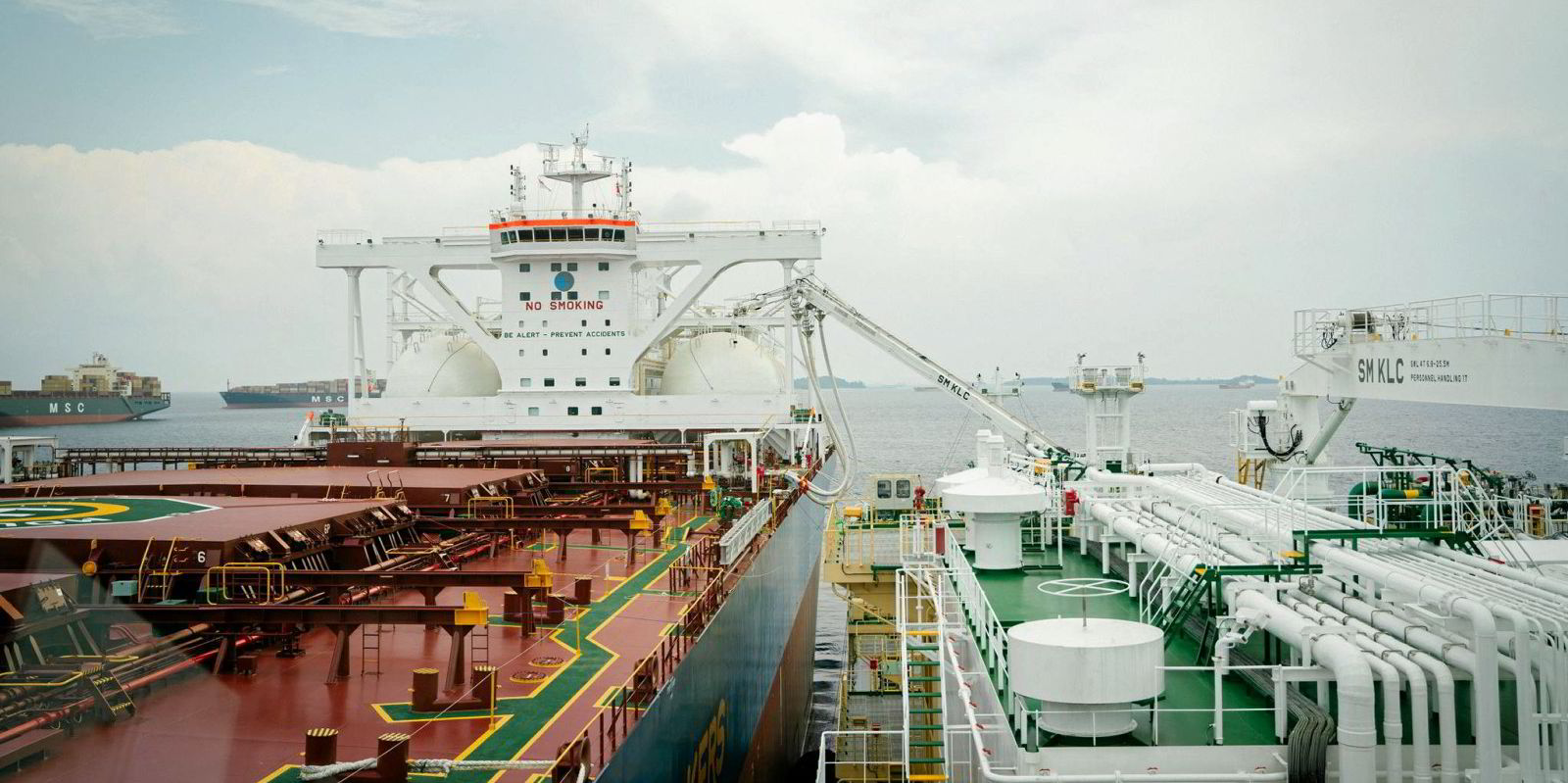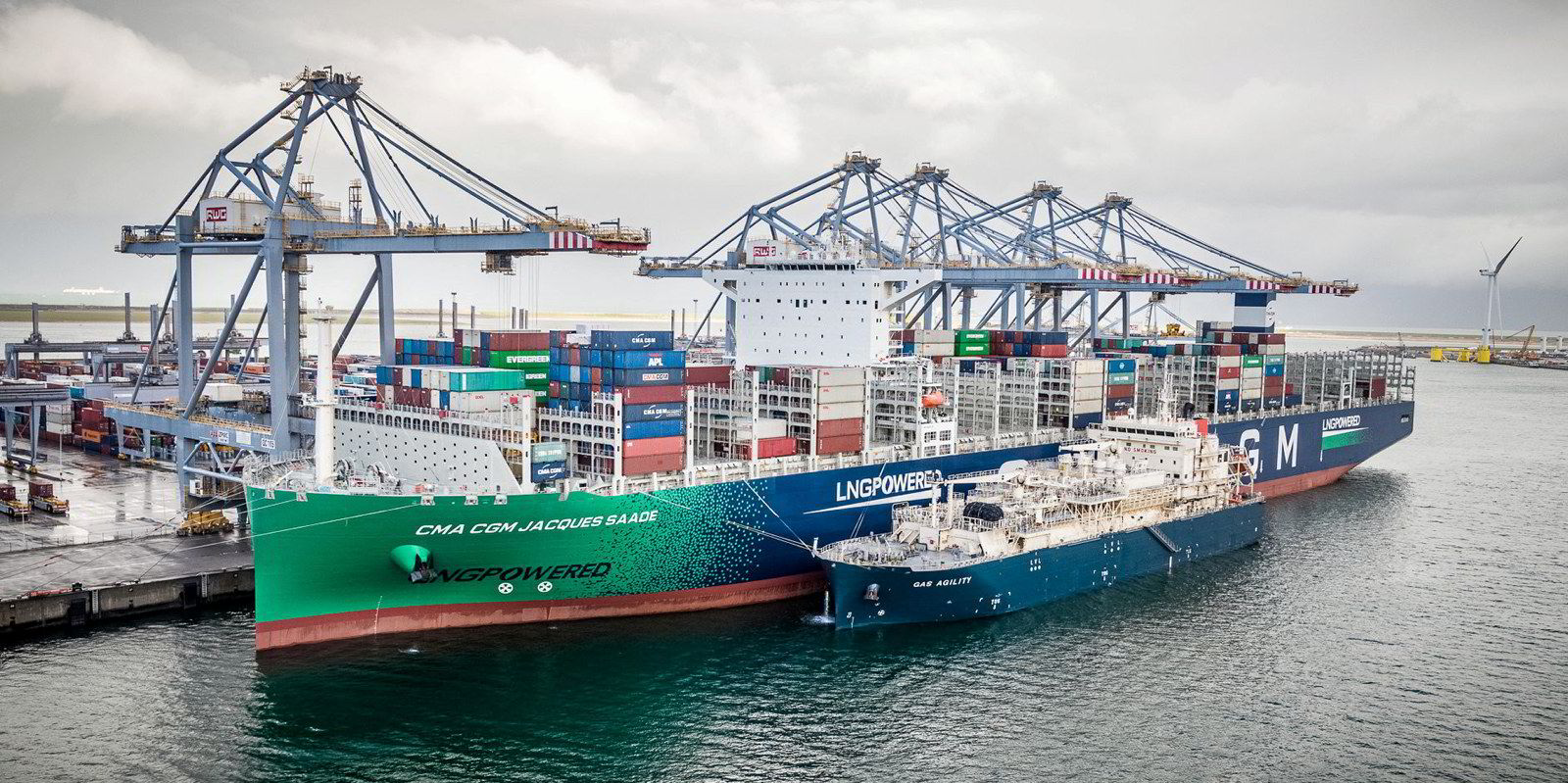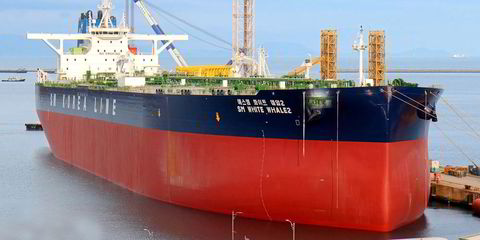More newbuildings were contracted with methanol dual-fuelled propulsion systems in the first 11 months of 2023 than ships that will be able to use LNG as fuel.
According to classification society DNV’s monthly tally, there were 268 new orders for vessels that can use alternative fuels in the period from January to the end of November.
DNV said that of these, 152 vessels were methanol dual-fuelled vessels while 112 were for those that can burn LNG.
The class society said June and July saw the most activity related to LNG, with 47 orders in total.
It said 48 orders were logged for methanol-fuelled ships in July, pushing on-order vessels that can use this fuel beyond the 200 mark.
TradeWinds has learned that CMA CGM’s reported decision to switch its order for eight 9,200-teu container ships from methanol-fuelled vessels over to LNG dual-fuelled ships — despite an anticipated higher capital expenditure — has been confirmed.
The vessels were originally contracted at Shanghai Waigaoqiao Shipbuilding in September priced at between $125m and $127m each. Brokers have said the move to LNG would likely add $10m per vessel to the capital expenditure.
DNV said just eight vessels were contracted with alternative fuelling systems in November. These were split equally between LNG and methanol, with all orders being for ships in the ro-ro and car carrier sectors.
Martin Wold, the class society’s principal consultant for its maritime advisory business, said: “While November’s performance may not have matched the volume of previous months, the overall enthusiasm and promising trajectory remain for both LNG and methanol. The same goes for ammonia...
“In general, the pipeline for both announced and unannounced projects remains strong, indicating that the pace will pick up again. However, it’s worth noting that the momentum we see in the tanker and bulk segments continues to experience a more gradual acceleration.”






